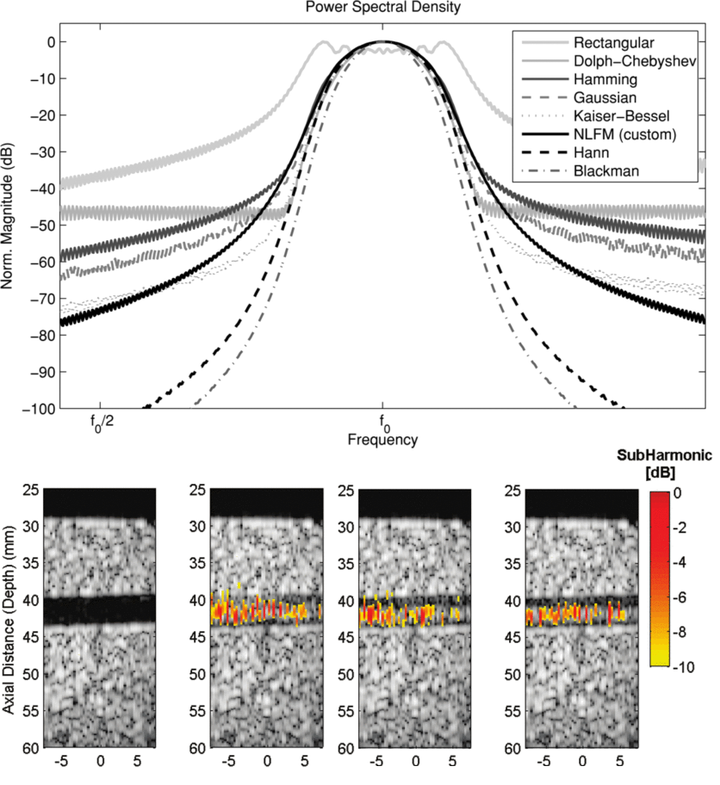
Abstract
Subharmonic generation from ultrasound contrast agents depends on the spectral and temporal properties of the excitation signal. The subharmonic response can be improved by using wideband and long-duration signals. However, for sinusoidal tone-burst excitation, the effective bandwidth of the signal is inversely proportional to the signal duration. Linear frequency-modulated (LFM) and nonlinear frequencymodulated (NLFM) chirp excitations allow independent control over the signal bandwidth and duration; therefore, in this study LFM and NLFM signals were used for the insonation of microbubble populations. The amplitude modulation of the excitation waveform was achieved by applying different window functions. A customized window was designed for the NLFM chirp excitation by focusing on reducing the spectral leakage at the subharmonic frequency and increasing the subharmonic generation from microbubbles. Subharmonic scattering from a microbubble population was measured for various excitation signals and window functions. At a peak negative pressure of 600 kPa, the generated subharmonic energy by ultrasound contrast agents was 15.4 dB more for NLFM chirp excitation with 40% fractional bandwidth when compared with tone-burst excitation. For this reason, the NLFM chirp with a customized window was used as an excitation signal to perform subharmonic imaging in an ultrasound flow phantom. Results showed that the NLFM waveform with a customized window improved the subharmonic contrast by 4.35 ± 0.42 dB on average over a Hann-windowed LFM excitation.